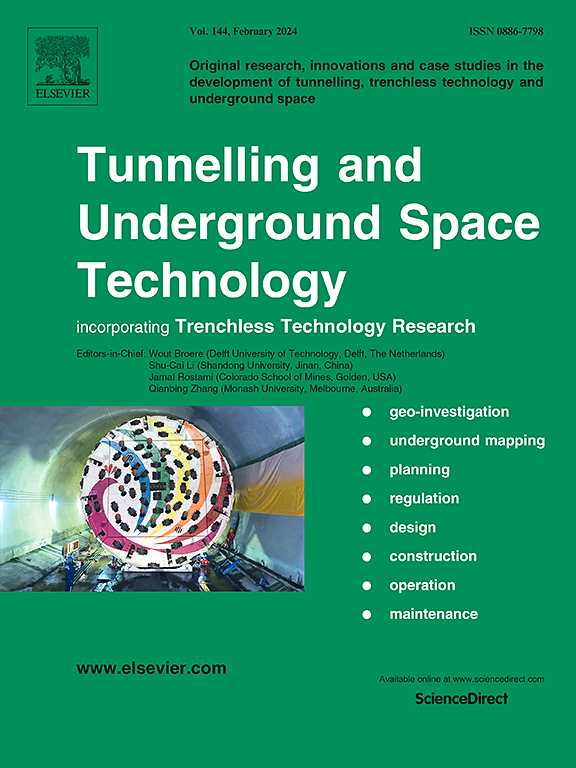Seismic fragility assessment of utility tunnel and internal pipeline system
IF 6.7
1区 工程技术
Q1 CONSTRUCTION & BUILDING TECHNOLOGY
引用次数: 0
Abstract
Probability-based seismic fragility analysis provides a quantitative evaluation of the seismic performance exhibited by structures. This study introduces a framework to perform seismic fragility analysis of utility tunnel and internal pipeline system considering wave passage effect of the ground motion spatial variation. The numerical model of a double-beam system resting on a nonlinear foundation is established to simulate the soil-tunnel-pipeline interactions. 17 pairs of earthquake records are chosen and scaled as inputs at the outcrop. One-dimensional (1D) free-field analyses are conducted to obtain the ground motion time histories at the bottom slab of the utility tunnel, and then incremental dynamic analysis (IDA) is performed for the utility tunnel-internal pipeline system. The damage states (DSs) are defined by the maximum joint opening for the utility tunnel and maximum strain for the internal pipeline, and the peak bedrock velocity (PBV) is determined to be the most representative intensity measure (IM) for developing the seismic fragility curves. The seismic fragility curves of the system are constructed using the joint probabilistic seismic demand model (JPSDM) and Monte Carlo sampling method. The research findings indicate that: (1) the framework proposed in this study is suitable for the fragility assessment of long-extended utility tunnel-internal pipeline system; (2) the utility tunnel and internal pipeline as a system exhibit greater fragility compared to either one of the components, and the JPSDM and Monte Carlo sampling method for the system fragility analysis is more precise than the first-order bound method; (3) the proposed fragility curves in this study provide quantitative damage probabilities for the individual components and system under different seismic intensity levels. (4) The IM values corresponding to 50% exceedance failure probability of the whole system is 1%–3% lager than that of the upper bounds, and it is 3% to 5% less than that of the lower bounds. The conservative upper bound is a more suitable approximation for system fragility. (5) It should be noted that the obtained fragility curves are valid for the considered tunnel-pipeline structure and site conditions. For different tunnel structures and site conditions, the fragility curves can be constructed following the same steps outlined in this study.
求助全文
约1分钟内获得全文
求助全文
来源期刊

Tunnelling and Underground Space Technology
工程技术-工程:土木
CiteScore
11.90
自引率
18.80%
发文量
454
审稿时长
10.8 months
期刊介绍:
Tunnelling and Underground Space Technology is an international journal which publishes authoritative articles encompassing the development of innovative uses of underground space and the results of high quality research into improved, more cost-effective techniques for the planning, geo-investigation, design, construction, operation and maintenance of underground and earth-sheltered structures. The journal provides an effective vehicle for the improved worldwide exchange of information on developments in underground technology - and the experience gained from its use - and is strongly committed to publishing papers on the interdisciplinary aspects of creating, planning, and regulating underground space.
 求助内容:
求助内容: 应助结果提醒方式:
应助结果提醒方式:


